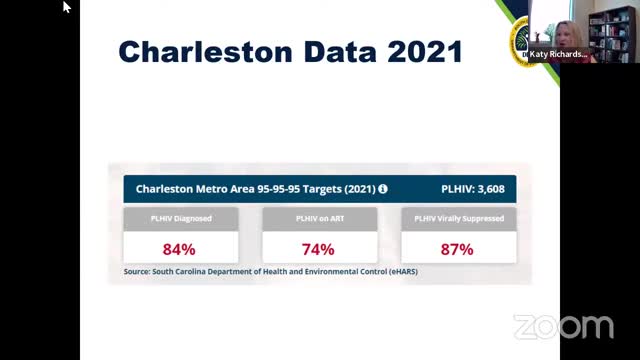HIV care declines in South Carolina amid pandemic challenges
October 02, 2024 | Charleston City, Charleston County, South Carolina
This article was created by AI summarizing key points discussed. AI makes mistakes, so for full details and context, please refer to the video of the full meeting. Please report any errors so we can fix them. Report an error »

Recent data presented at a government meeting highlights concerning trends in HIV care and treatment in South Carolina, particularly within the Charleston Metro area, which includes Berkeley, Dorchester, and Charleston Counties. According to the latest statistics, approximately 3,608 individuals were living with HIV in 2021. The data, sourced from the Centers for Disease Control and Prevention (CDC), indicates that while 84% of those living with HIV are aware of their status, there has been a decline in the percentage of individuals receiving antiretroviral therapy and achieving viral suppression.
In 2021, 74% of those who knew they were HIV positive were on antiretroviral therapy. However, this figure dropped to 71% in 2022. Additionally, the percentage of individuals on therapy who achieved viral suppression fell significantly from 87% to 74%. These declines raise alarms among public health officials, who attribute some of the downturn to the ongoing impacts of the COVID-19 pandemic, which has hindered access to healthcare services.
The Department of Public Health is currently exploring the reasons behind these troubling trends and is seeking input from stakeholders on potential solutions. The meeting underscored the need for renewed efforts to improve access to care and support for individuals living with HIV, particularly in the wake of the disruptions caused by the pandemic. As the department prepares for the CDC's upcoming recalculation of HIV data, there is a pressing need to address these challenges to ensure better health outcomes for the affected population.
In 2021, 74% of those who knew they were HIV positive were on antiretroviral therapy. However, this figure dropped to 71% in 2022. Additionally, the percentage of individuals on therapy who achieved viral suppression fell significantly from 87% to 74%. These declines raise alarms among public health officials, who attribute some of the downturn to the ongoing impacts of the COVID-19 pandemic, which has hindered access to healthcare services.
The Department of Public Health is currently exploring the reasons behind these troubling trends and is seeking input from stakeholders on potential solutions. The meeting underscored the need for renewed efforts to improve access to care and support for individuals living with HIV, particularly in the wake of the disruptions caused by the pandemic. As the department prepares for the CDC's upcoming recalculation of HIV data, there is a pressing need to address these challenges to ensure better health outcomes for the affected population.
View full meeting
This article is based on a recent meeting—watch the full video and explore the complete transcript for deeper insights into the discussion.
View full meeting